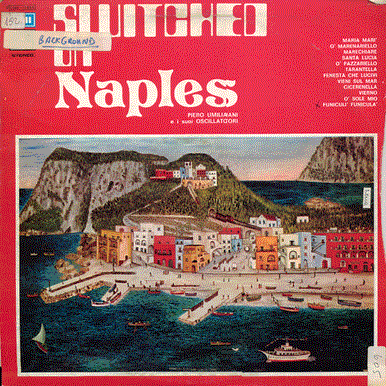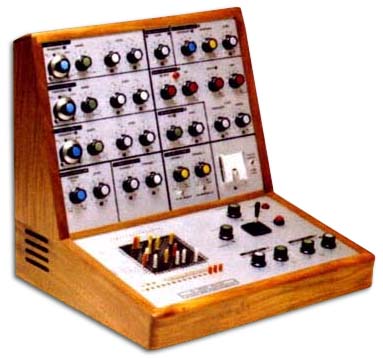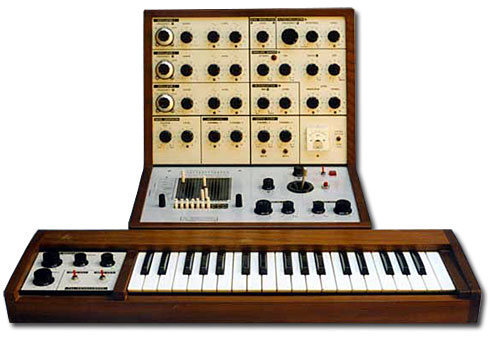

E

(
View LP Cover
)
SWITCHED ON NAPLES
| SIDE 1 MARIA MARI O MARENARIELLO MARECHIARE SANTA LUCIA O' PAZZARIELLO |
SIDE 2 TARANTELLA FENESTA CHE LUCIVI VIENI SUL MAR CICERENELLA FANTASIA DI MOTIVI |
|
|||
|
|
MARIA MARI | ||
|
|
O MARENARIELLO | ||
|
|
MARECHIARE | ||
|
|
SANTA LUCIA | ||
|
|
O' PAZZARIELLO | ||
|
|
TARANTELLA | ||
|
|
FENESTA CHE LUCIVI | ||
|
|
VIENI SUL MAR | ||
|
|
CICERENELLA | ||
|
|
FANTASIA DI MOTIVI: VIERNO - O' SOLE MIO - FUNICULI' FUNICULA' | ||
|
SWITCHED ON NAPLES
|
||||||

|
The VCS3 (Nicknamed the Putney)
The VCS3 (nicknamed the Putney) is an
analog monosynth housed in a distinctive angled wooden case, a truly
classic synth. EMS (Electronic Music Studios) was created in England
back in 1969. The VCS3 was one of their first synths and it is still a
great, unique, funky little unit! Pictured above is the Mark I model.
Pictured is another unit with the small wood-cased DK2 voltage-control
keyboard required to play the VCS3. |



